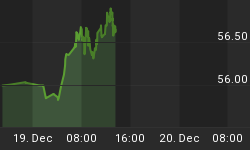Pursuant to our Friday note alerting further dollar gains this week, the US currency is higher across the board. We stick with our forecast expecting EURUSD to tests 1.3040 and breaking 1.30 to 1.2970 this week, and USDJPY to retest 118.60 and onto 119. We extend this call to AUDUSD expected to test 0.7750 and GBPUSD to test 1.9420. The fundamental catalyst for fresh dollar gains today could be the December Homebuilders Survey (1pm EST) expected at 34 from 33. Any figure above 33 should sustain dollar gains.
This morning's release of the US Q1 current account showed a rise to $225.6 bln from $217.1 bln in Q2, in line with expectations. Although the goods trade deficit reflected a slowdown in the pace of the deterioration, the capital account deficit shows net foreign disinvestment (net sales) in US treasuries to $7.2 bln following a net investment (net purchases) of $9.8 bln in Q2. These two items are in line with the net foreign sales of US treasuries seen in the September TICS report, which was the first net selling since February 2003 (which coincided with dollar declines ahead of Iraq invasion risks), and in line with the improvements in the trade deficit.
We expect the fundamental catalysts for further EURUSD losses being tomorrow's IFO business climate survey showing a decline from its 15 ½ year highs of 106.8, which should evoke worries about euro strength and GDP growth cooling in Q4.
Similarly, the fundamental catalysts for further sterling losses are seen from the minutes of the Bank of England's minutes (due Wednesday) showing a unanimous or (all but 1) decision to leave rates unchanged at 5.00% in this month's meeting, which could weigh on expectations of a January rate cut.
Finally, we warned on Friday afternoon that gold could show further losses after falling below $620, and now it is extending these losses to $613 and ominously approaching the 100-day moving average of $609.30. This level coincides with the 2-month trend line support. Key support stands at $605.


















